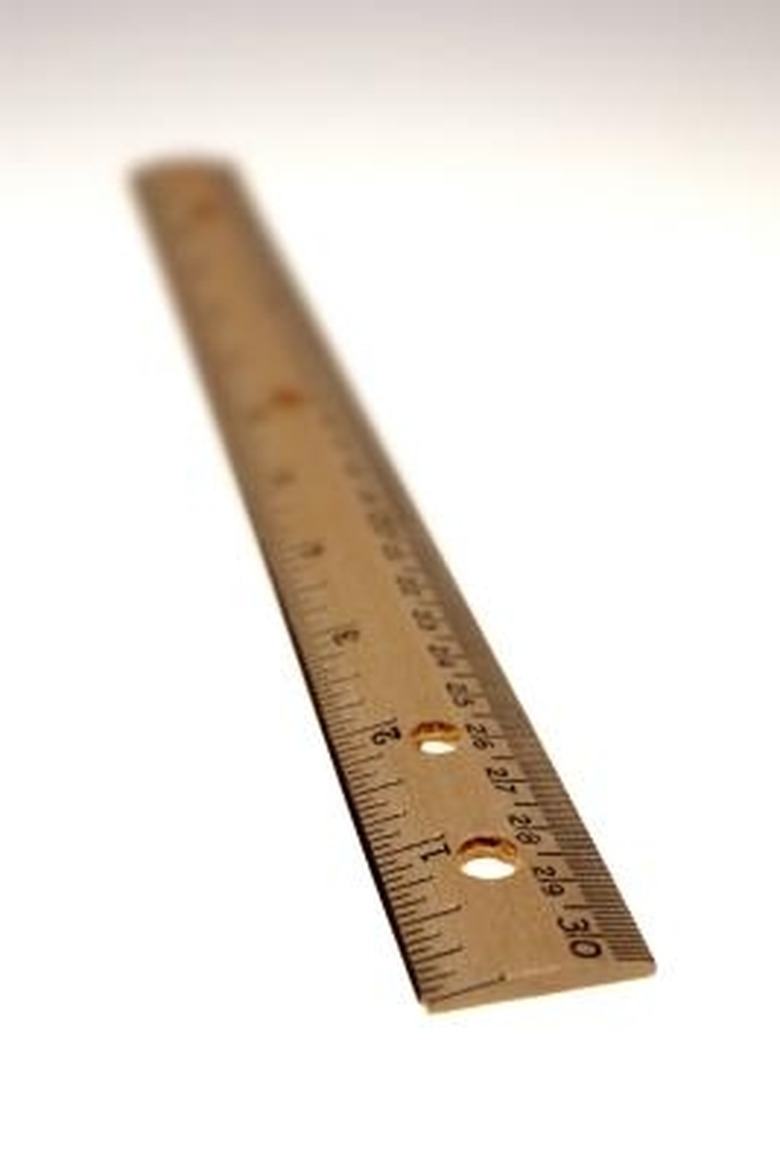How To Teach Kids To Read A Ruler
Homeschooling parents have the advantage of being involved in their children's learning, and they can even make a game out of some lessons. The following is a fun way to spend the morning that teaches a child about measurement: how to measure, different methods of measuring through time and how to read a ruler. By the end of this series of activities, the child will be able to use a ruler to measure objects with confidence. Of course, feel free to take as much time with each step as you deem appropriate (another benefit of homeschooling), since this does not need to be completed all in one morning.
Step 1
If a child knows how to count, then she can be taught to read a ruler. Start by drawing number lines together on big pieces of paper. Let the child participate in marking spots on the number line, and writing the numbers above those marks, in sequential order. This gives the child practice in both counting and writing numbers correctly.
Step 2
Talk to the child about how people may have originally measured things with their body parts–that once the length of the thumb and a person's foot was a common unit of measurement. Have some fun with this. How many "feet" long is the room you are in? Let the child walk heel-to-toe across the room, and answer the question on the length of the room. Measure other rooms with feet, and smaller objects with thumbs.
Step 3
Bring out a ruler or a tape measure. Point out that it is just like a number line, but the spacing between each number is equal. Instead of thumbs, we now use inches. And every 12 inches is a foot. Measure the same things all over again, but this time compare thumbs to inches, and "feet" to feet. So, if a book was 10 thumbs long, how many inches? If the same book is 8 inches long, which is longer, an inch or your thumb?
Step 4
Instruct the child to choose 5 things to measure, and let her measure them. This will cement the lesson in her mind and give her practice.
Step 5
Make a chart comparing the things you measured. For example, if a room was 30 child's feet long, how many 12-inch feet long was it? Make a chart showing each measured item in body measurements and ruler measurements. Display the chart in a prominent place.
Things Needed
- Paper
- Pencils
- Ruler or tape measure
- Things to measure
TL;DR (Too Long; Didn't Read)
Number lines are an especially useful tool for teaching addition and subtraction. For example, if you start on "4" and hop 3 places to the right, what number do you land on? The answer is "7," because 3+4=7. Similarly, if you start on "9" and hop 5 places to the left, you land on "4," because 9-5=4.
Cite This Article
MLA
Hanly, Samantha. "How To Teach Kids To Read A Ruler" sciencing.com, https://www.sciencing.com/teach-kids-read-ruler-4740155/. 24 April 2017.
APA
Hanly, Samantha. (2017, April 24). How To Teach Kids To Read A Ruler. sciencing.com. Retrieved from https://www.sciencing.com/teach-kids-read-ruler-4740155/
Chicago
Hanly, Samantha. How To Teach Kids To Read A Ruler last modified March 24, 2022. https://www.sciencing.com/teach-kids-read-ruler-4740155/
